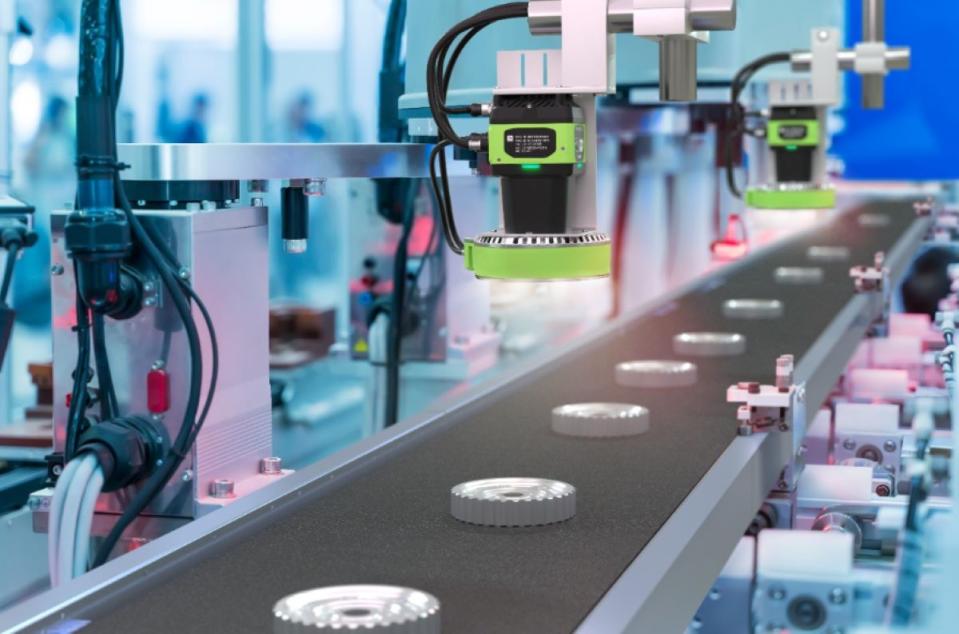Redefining Asean’s manufacturing landscape with deep learning

Deep learning OCR offers the greatest benefits to operations within automotive, pharmaceutical, electronics and F&B industries.
The manufacturing industry is a key pillar of economic growth and innovation in Asean, with the industry accounting for 21% of the region’s gross domestic product (GDP) and expecting to double to $1.4 trillion by 2028. The industry is expected to grow further, with technology continuing to redefine the manufacturing industry, presenting unprecedented opportunities and challenges alike. Now, more than ever, the impact of technology on the manufacturing sector is profound. Navigating these transformative trends and challenges by harnessing the power of technology is imperative for businesses to thrive in an increasingly dynamic global market.
According to Zebra’s Automotive Ecosystem Vision Study, 73% of industry decision-makers think their business will be at a competitive disadvantage if they do not embrace more digital technologies, with “developing software expertise” cited as a top five investment priority. In Asia Pacific, manufacturers are increasingly exploring the adoption of Industry 4.0 practices to revolutionise their operations and drive cost-efficiency. A significant focus lies on empowering their workforce to bolster productivity while enhancing the efficiency and precision of their processes. While Asean manufacturing has faced stiff competition from Chinese factories in recent years, the digital technologies associated with Industry 4.0 can help Asean manufacturers overcome relatively low productivity rates to regain their position as global leaders.
An emerging technology innovation that is increasingly gaining significance is deep learning optical character recognition (OCR) software. According to the same Zebra automotive study, industrial machine vision is expected to see an 83% increase in usage between 2023 and 2027 (from 24% to 44%), according to original equipment manufacturer (OEM) decision-makers surveyed.
The combination of deep learning and OCR addresses the crucial demands for speed, accuracy and reliable solutions for compliance, quality and presence checks across manufacturing industries. Deep learning OCR offers the greatest benefits to operations within the automotive, pharmaceutical, electronics and food and beverage industries.
Leading the smart manufacturing revolution with AI
Asia Pacific is home to the largest smart manufacturing industry in the world and it is expected to expand further by 15.7% in compound annual growth rate through 2030. With the growing adoption of artificial intelligence (AI) and a strong manufacturing base, the region is well-positioned to stay ahead in smart manufacturing for the rest of the decade. Machine vision and deep learning OCR are revolutionising smart manufacturing, transforming how people, processes, and technology work together, providing essential information to improve decision-making quality, efficiency, cost-effectiveness, and agility.
While it can be challenging to get OCR inspection right with traditional techniques, new industrial-quality deep learning OCR tool come with ready-to-use neural networks pre-trained using thousands of different image samples and can deliver high levels of accuracy straight out of the box, even when dealing with very difficult cases.
Deep learning OCR can also be utilised as part of a wider machine vision solution. The deployment of these machine vision solutions, utilising the same machine vision cameras and unifying software platform, allows inspection of items to be done at an accelerated pace. Suspected defects and errors are promptly flagged for engineer examination, enabling quick decision-making on fault identification. By feeding the review decision back into the neural network, it enables active continual learning input, which helps to perpetually develop and enhance the model. By automating tedious tasks, engineers can focus on critical decisions and think like data scientists, enhancing efficiency in manufacturing settings.
Tackling quality assurance with technology
Moreover, the pursuit of quality in manufacturing gained renewed importance in the era of Industry 4.0 and smart manufacturing. With global markets growing increasingly competitive, manufacturers are tasked with delivering products that meet stringent quality standards.
However, ensuring consistent quality is a multifaceted challenge. From sourcing the right raw materials and components to deploying precise production techniques and rigorous testing mechanisms, quality assurance demands a holistic approach. The complexities of supply chains, variations in human labour, machinery imprecision, and external factors like regulations and standards further add layers of intricacy to this task. In this landscape, leveraging technology like OCR becomes essential for maintaining and improving product quality while navigating the complexities of modern manufacturing processes.
Deep Learning: The engine driving manufacturing innovation
Deep learning’s speed and accuracy enable it to greatly assist engineers. By leveraging the power of deep learning algorithms, manufacturers can gain better insights into their production process, ensuring quality of manufacturing, optimising it to reduce costs while increasing customer satisfaction. In addition to its effectiveness, the ease of use of deep learning OCR software is a key attribute. With easy implementation in just a few simple steps, it eliminates the need for specialized machine vision expertise.
These innovations are unlocking new possibilities for manufacturers to thrive in an era of unprecedented technological advancement and increasing demands for speed, safety, and accuracy. Accessible machine vision and deep learning OCR solutions are unlocking new possibilities for industrial imaging professionals and engineers to think and act more like data scientists. This development is needed and welcomed, particularly in light of the ever-growing data velocity, volume and variety and higher levels of speed, safety and accuracy expected.
Businesses must be poised to transcend current capabilities, nurturing an environment that empowers continual enhancement in a dynamic, data-driven marketplace. The future goes beyond mere technology adoption; it entails forging a symbiotic relationship between technology and human expertise to redefine the very essence of manufacturing.
Tan Aik Jin is the Apac Solutions Lead for Manufacturing and Singapore ZEC, Zebra Technologies
See Also:
Click here to stay updated with the Latest Business & Investment News in Singapore
Get in-depth insights from our expert contributors, and dive into financial and economic trends

 Yahoo Finance
Yahoo Finance 